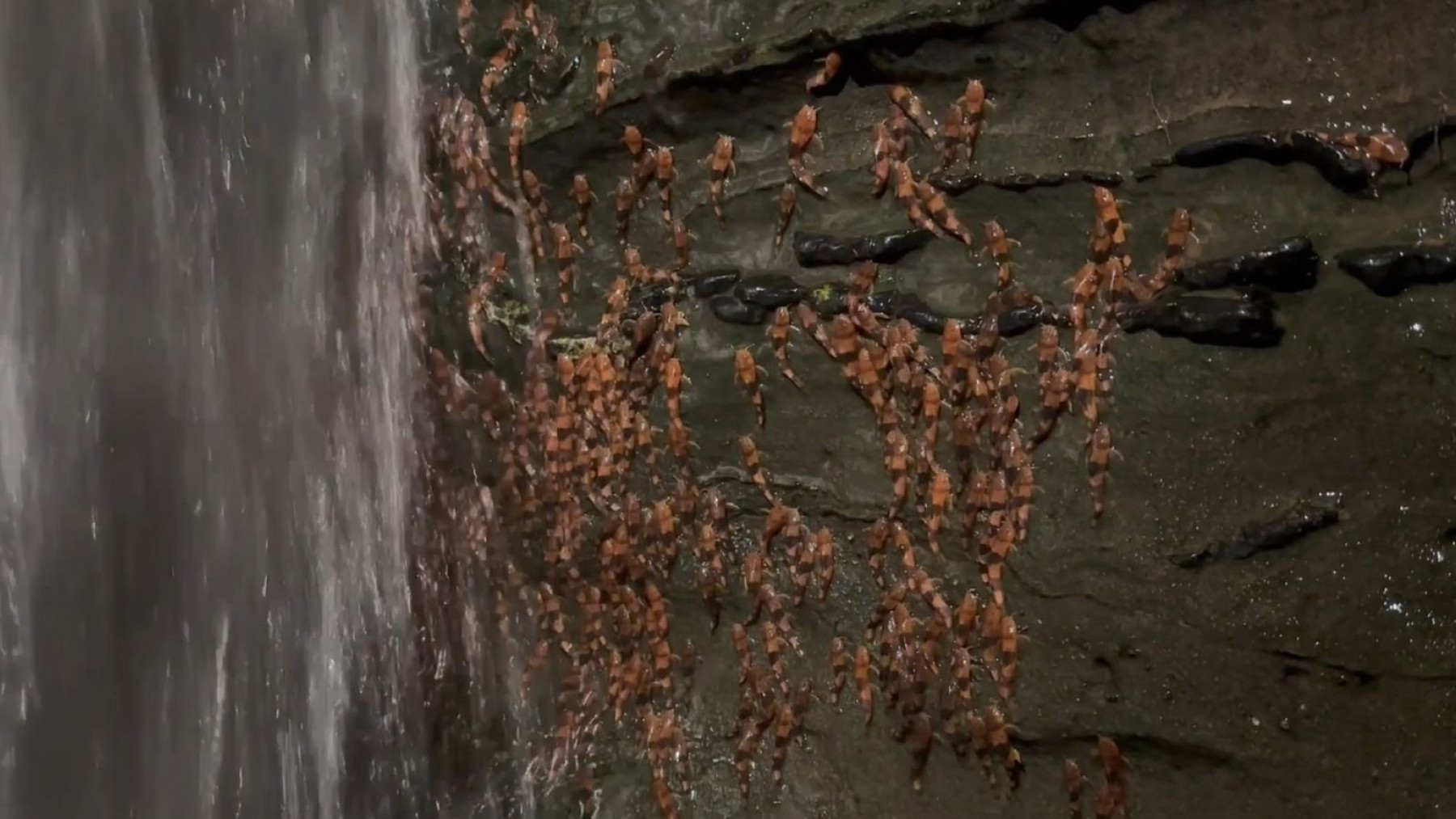I will never get tired of saying it: nature never ceases to amaze us (thankfully). One of the ways it has chosen to do so is through an event that has left scientists perplexed. It took place in Brazil, where a large group of bumblebee Catfish has been recorded and observed moving upstream, trying to climb the walls of a waterfall, as reported by Phys.org. Researchers have determined that this migratory behavior is driven by reproductive purposes: their goal was to release their eggs. Such events highlight the importance of research through observation, in order to detect threats that may affect the habitat of the analyzed species. The conservation of species depends on the study and understanding of animal behavior.
Bumblebee catfish, Rhyacoglanis paranensis
“Bumblebee catfish” is the informal term used to refer to the orange and black catfish, but its scientific name is Rhyacoglanis paranensis. It is a species of freshwater catfish characterized by its massive migration movements and its ability to climb waterfalls.
Surprises of nature in Brazil
About a year ago, in November 2024, a natural phenomenon occurred that no one expected. It took place near a police station in the state of Mato Grosso do Sul, Brazil, where the state’s Environmental Military Police detected a group of thousands of catfish climbing the walls of a waterfall that was between 1 and 4 meters high, according to reports from Phys.org. According to Miami Herald, witnesses described the situation as ‘thousands of small catfish clustered together slowly moving upstream.’ Immediately, the authorities contacted a team of researchers specialized in ichthyology.
It could be clearly seen how the fish supported each other in the steeper sections. This highlighted their ability to interact in a cooperative and coordinated manner. This surprised the researchers even more. The surprise also came from the presence of three additional species participating in this migratory movement, despite the fact that the bumblebee catfish was the most abundant.
Why were they moving upward?
The problem in understanding this type of movement and habit lies in the lack of knowledge about the habits of these species. This has been a result of the brevity of these migratory events, as well as the difficulty of studying them due to their small size. However, this migratory enigma has been solved thanks to the research team formed by Manoela Marinho, Eris de Paula, Francisco Severo-Neto, Yasmim Santos, and Heriberto Gimênes-Junior.
The study required 20 hours of observation that anyone from around the world could join, thanks to the installation of the eagle camera by the Hilton Head Island Land Trust, done by some researchers. The analysis of the specimens, considering the time of year it occurred, led the scientists to discard the idea of movement as a result of food searching, but rather it had a reproductive purpose: the fish were trying to climb the walls of the waterfall to lay their eggs.
Importance of observation
The knowledge and understanding of the diversity of South American ichthyofauna depends almost entirely on research efforts through observation. Science still does not know how to explain the migratory movements of smaller species, so this type of event helps to expand that lack of knowledge. For this reason, the work of researchers is essential, as the conservation of species also depends on this: if we do not understand their habits, behaviors, and needs, it will be difficult to take action to avoid harming them.





